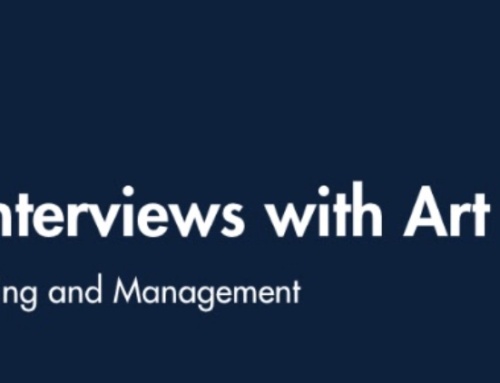The idea of reinventing yourself in your career is intimidating and even overwhelming. Yet, every week I talk with one or more mid to late career professionals interested in finding “next” in their professional endeavors. I am consistently adding new “Reinvent” clients to my coaching practice.
These successful, experienced professionals share one common motivation: the drive to find a different and more engaging and rewarding way to apply their superpowers for something they care deeply about in their lives.
This “next” they are seeking is more than a job or geography change. They are driven by an innate feeling of the need to do more with their skills.
They are looking for a cause or, they have the cause in mind but are not sure how to operationalize it. And almost all are driven by that quiet, ticking clock that says, “Time is growing shorter. If I want to make a difference in a new way, I need to get on with it.”
For anyone undertaking this journey of career reinvention, recognize this is mostly about a journey to rediscover oneself.
It’s that “self” that was filled with the idealism of youth, confident in the belief your purpose was nothing less than to make a difference for some audience or some cause in a big way.
However, time and the pressures of life get in the way of the dreams of youth.
Commitments force trade-offs and before you know it, you wake up a few decades later with the trappings of success, but not the feelings you expected.
You know it’s time to reinvent, but you don’t know how.
In working with some great professionals who share many of the common traits and perspectives outlined above, I’ve identified six stages involved in the work of career reinvention.
While any listing of steps or stages implies a linear process, please know that the process of career transformation is often anything but linear.
Nonetheless, at some point, every career re-inventor must pass through these gates.
The Six Stages of Career Reinvention:
1. Determination
In this stage, you work to reconcile the emotions described above with the realities and practicalities of life and your situation. Many (most) individuals ultimately conclude a job or geography change will satisfy the yearning for “next.”
There are practical considerations as to why sustaining income and leveraging the professional equity developed through decades of work make great sense.
And for some, the issue is clear-cut: no like-kind job will fill the internal need for adventure and the pursuit of significance. For these individuals, it’s time to start the hard work of reinvention.
2. Self-Discovery (Self-Recognition)
 In my experience, the majority of individuals striving to reinvent their careers show up with a powerful drive but a fuzzy or vague goal. Some just know they need to do something different, and need some help finding the right vector. Before looking outward much as you might do for a job search, I guide people through a series of activities intended to help them fine-tune their sense of self and better prepare to find their sweet spot: the convergence of superpowers, passion, and marketability.
In my experience, the majority of individuals striving to reinvent their careers show up with a powerful drive but a fuzzy or vague goal. Some just know they need to do something different, and need some help finding the right vector. Before looking outward much as you might do for a job search, I guide people through a series of activities intended to help them fine-tune their sense of self and better prepare to find their sweet spot: the convergence of superpowers, passion, and marketability.
In the Self-Discovery phase, you are challenged to tune in to three key areas:
What it’s like to be you at your best.
We are exploring those moments in your life—personal or professional, where you were exhilarated and where you achieved moments of flow. We look at the circumstances, your role in the process, and the individuals or types of individuals involved to find clues to situations that draw out your best.
How others perceive your superpowers.
It turns out, not only are we blind to our weaknesses, we are blind and deaf to our superpowers. In this activity, you work with colleagues from your present and past (including adversaries) to better understand what they perceived as your strengths and value-add. We also strive to understand how you impact others in their lives through your workplace collaboration.
The findings in this phase are always profound and often emotional.
Your Backstory
Every one of us is an outcome of our environment, culture, upraising, and family history. Tuning in to your backstory, ranging from family history to your professional life and the milestones along the way, is a powerful means of better understanding yourself.
In many instances, the through-lines in one’s backstory point to “next” for an individual.
The Self-Discovery phase is one of deep and powerful introspection. And while to some it sounds like advanced lessons in navel-gazing, my experience and perspective is that it is mission critical in identifying the sweet spot: the intersection of superpowers, passion, and marketability. The Self-Discover phase is all about reframing your view on you.
Skip this step at your peril.
3. Exploration
It’s at this stage where you begin to develop ideas for potential choices or vectors. We work to parse and make sense of the content generated in Self-Discovery. We bring in multiple minds and voices, and once we’ve synthesized the output sufficiently, we ask the general question: What potential options does this point to?
 In Exploration, you define one or more “Causes” that excite you and that seem to draw upon or leverage your superpowers and that fit into the “you at your best” model.
In Exploration, you define one or more “Causes” that excite you and that seem to draw upon or leverage your superpowers and that fit into the “you at your best” model.
You explore, checking out vocations, organizations, or looking at entrepreneurial endeavors that seem to make sense. You connect with, interview, and strive to learn more about the realities in different arenas.
And most of all, you resist judging the opportunities until much later in this phase. You continue to refine your thinking on the cause, and you strive to see opportunities for bringing it to life. Practicality is reserved for experimentation.
Too many are quick to assess something as impractical or not marketable. My polite push-back is the work of exploration isn’t rigorous enough to assess marketability. If the idea or vector still aligns with superpower and passion, it merits moving to the next phase, experimentation.
4. Experimentation
Up until now, all of the work has been divergent. You’re looking far and wide. In experimentation, you begin to converge around a limited number of hypotheses on where and how you might apply your superpowers and passion for a cause, in an environment that meets your needs on multiple levels.
Some clients have taken side gigs or extracurricular activities to test their hypothesis for a particular arena. Several have done so with the blessings of their firm and manager. Others prefer a clean and distinct separation. A few clients have shifted into jobs in the target industry to develop an up-close and personal perspective on the real environment.
The challenge in this phase is to define the experiments necessary to reasonably assess fit with your criteria. Every person and every situation is different. There’s no easy formula to follow here. For everyone in this phase, I encourage you to enlist the support of a seasoned, objective advisor. I did this alone without help and burned a great deal of time chasing down blind alleys.
As a winner emerges through your deliberate and detailed evaluation of the different vectors, it’s time to think about preparing for a change.
5. Conditioning
I love the comparison of preparation to shift to a new vocation or pursue a new career vector to physical conditioning.
There’s the mental game of preparing yourself to step in some cases far beyond your comfort zone.
There’s a financial component of reasonably and rationally determining how you will meet your obligations. In some cases, this means shedding some obligations.
And there’s the work of building a lean business plan to attack the opportunity—a series of activities too large for the scope of this post.
The goal in Conditioning is to think through and prepare for all aspects of bringing life to you pursuing your cause.
By this stage, many are anxious to make the jump to the new opportunity. A bit of discipline an a little “slow down and think to move faster” approach goes a long way toward preparing you for Launch.
6. Launch
Inherent in this phase is an incredible amount of work you might reasonably describe as marketing.
For some individuals, “going to market” triggers the work of community building.
 For others, it’s beginning the work often referenced as “thought leadership.” This ranges from writing a book (a lengthy process) to beginning to write articles, speak, talk, and network to anyone in the target ecosystem.
For others, it’s beginning the work often referenced as “thought leadership.” This ranges from writing a book (a lengthy process) to beginning to write articles, speak, talk, and network to anyone in the target ecosystem.
Some individuals pursue new organizations in markets that move them to the epicenter of their cause.
A good number launch a business venture.
Finding the right approach—the right vehicle—is mission critical here. And for all, I caution that even with all of the deliberate work they’ve done on this process, they should expect to learn and as needed, pivot. The right answer doesn’t always show up the first-time.
Life’s not that easy–especially when it comes to personal change.
The Bottom-Line for Now:
This is a long post that is extraordinarily light on the details and work involved in career invention. It is hard work, filled with moments of self-doubt and occasional fear. For those with that inner voice saying “Now” and “Next” it might be the most important work of your life.
![]()
—
Resources:
Note from Art: my recorded webinar: Reinventing Your Career: A Six Step Process for Becoming You at Your Best is still live and thanks to the magic of my webinar host, available for regular viewing. It’s 56 minutes of solid information. Light pitch for my coaching services at the end. If you are interested in exploring career reinvention, drop me a note and we’ll start the conversation.
Career Reinvention: Overcoming Your View on You







[…] "The idea of reinventing yourself in your career is intimidating and even overwhelming. Yet, every week I talk with one or more mid- to late-career professionals interested in finding 'next' in their professional endeavours," consultant Art Petty writes on his blog. […]